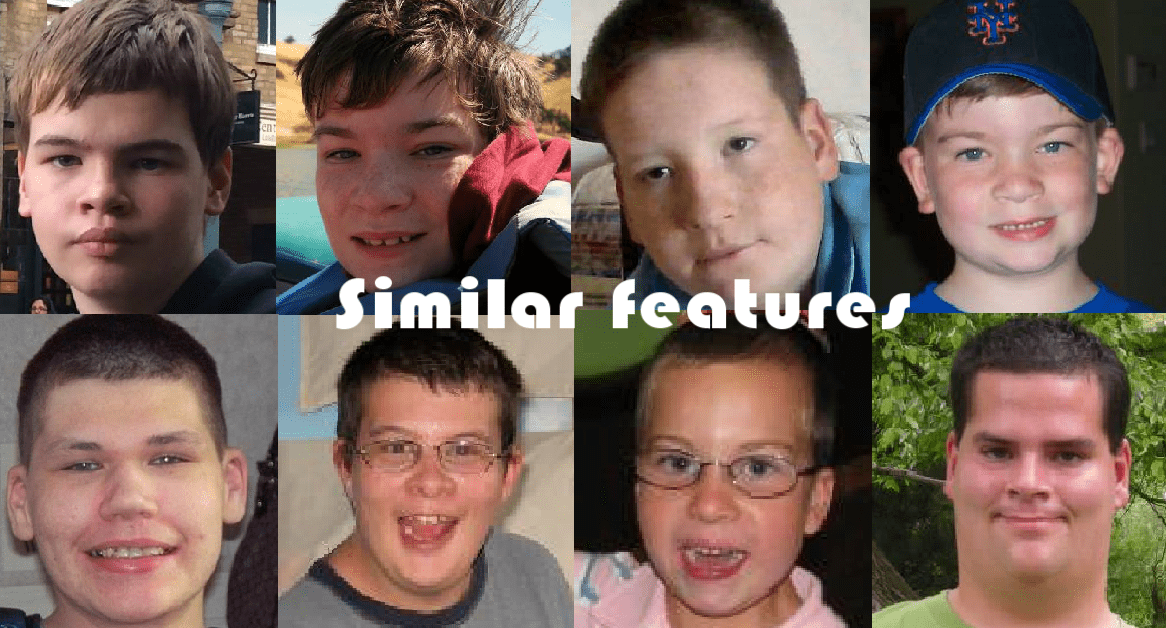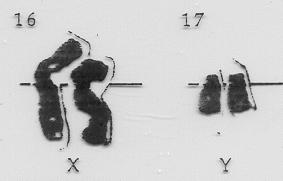What is XXYY Syndrome?
Print This Page
48,XXYY is a sex chromosome variation that affects one in every 17,000 boys who are born.¹
XXYY Syndrome is the name attached to the cluster of symptoms that arise as a result of the 48,XXYY chromosome pattern.
48,XXYY is one of several types of sex chromosome variations, including those that are considered as variants of Klinefelter Syndrome, 47,XXY and XXXY, XXXXY, XY/XXY and another syndrome called XYY, all of which affect males. Similar female syndromes include Turner Syndrome (XO) and several variations with added X’s. There are important differences, between boys and men with 47,XXY and those with 48,XXYY and some authors have questioned whether 48,XXYY males should be included under the umbrella of Klinefelter Syndrome.²
48,XXYY is not an Intersex condition or indication. Please read our notice on XXYY and Intersex Conditions.
Characteristics of XXYY Syndrome
XXYY is often mistaken for other syndromes. The most common symptoms and characteristics that would be noticeable by parents, teachers, medical professionals and other treatment providers are:
- Developmental delays
- Speech impairment or delay
- Tall, considering family history
- Behavior outbursts & mood swings
- Learning disabilities
- Intellectual impairment
- ADD or ADHD symptoms
- Autism, autism spectrum, PDD-NOS
- Scoliosis
- Clinodactyly (Curved-in pinky fingers)
- Low muscle tone
- Flat feet/club feet
- Sterility
- Delayed sexual development
- Undescended testes
- Low or no testosterone
- Dental problems
- Leg ulcers
- Heart defects (i.e. VSD)
(Not all individuals with XXYY Syndrome experience all of these symptoms)
Cause and Rate of Occurrence
The cause of 48,XXYY is still not completely understood. Since extensive studies have not been conducted on the cause of 48,XXYY, there is currently very little information about whether or not there are environmental , hereditary or other factors which can result in this chromosome pattern. There is no evidence that parents of one XXYY child are more likely to have other children with sex chromosomal variations. Sex chromosomal variations in general are actually quite common. The occurrence of 48, XXYY is 1 in 17,000 live male births. The occurrence of Klinefelter Syndrome, XXY, is 1 in 500.
Diagnosing 48,XXYY
Diagnosing 48,XXYY requires a genetic test called a karyotype. The test is done by drawing blood and an analysis is done on the cells of the blood to determine the boy or man’s chromosomal make-up. In some instances, a boy can have some normal XY cells and some XXYY cells, this is called . A karyotype is the only way to know for certain that a boy or man has 48,XXYY.
XXYY, Autism & ADHD
XXYY has strong links to Autism and ADHD
In a study of XXYY Syndrome that included 92 patients, 28.3% had a previous diagnosis of Autism and 72.2% had a previous diagnosis of ADHD.³ Even XXYY patients who are not diagnosed on the Autism spectrum have autistic-like features and executive function issues. Autism has also been associated with Klinefelter Syndrome (XXY).⁴
That is why it is important for the XXYY Project to reach parents of boys who have Autism and/or ADHD to make sure that you have sought genetic testing.
Many boys and men with XXYY have similar facial features, plus several other physical features that are associated with the condition. Does your son or patient look like the boys and men in these photos? These are all different boys and men.

The XXYY Project is particularly concerned with adults who have an autism or ADHD diagnosis who have never had genetic testing. We know that more genetic testing is being done on children with autism, but there may be adults out there who were never tested.
Living with Klinefelter Syndrome (47,XXY) Trisomy X (47, XXX) and 47, XYY: A Guide for Families and Individuals Affected by Extra X and Y Chromosome Variations
(AXYS special note: Also includes information on XXYY)
Thanks to the generosity of the book’s author, Virginia Isaacs Cover, MSW, AXYS is pleased to make this book available to the X and Y variation community, in its entirety, at no cost. Please feel free to download and/or print it for your personal use. Those wishing to purchase a soft-bound copy can do so at Amazon or Kindle. All proceeds from the sale of this book benefit the GALAXY registry of X and Y variations.
“Spanish: A Guide for Families and Individuals Affected by X and Y Chromosome Variations”

